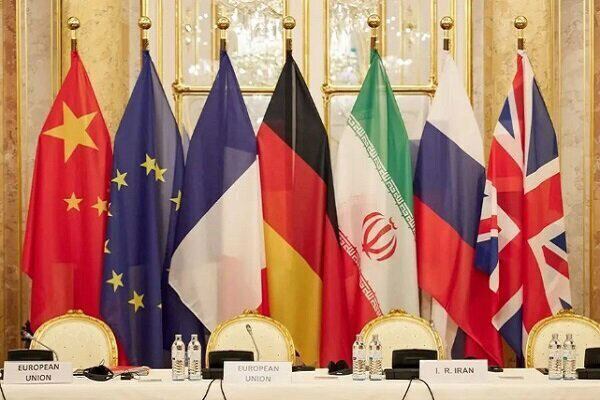Tehran – The Joint Comprehensive Plan of Action (JCPOA), signed in 2015, incorporates a Dispute Resolution Mechanism (DRM), commonly referred to as the “snapback mechanism” to enforce compliance.
The European trio now threatens to cause a snapback, through which they are returning UN sanctions against Iran. However, in doing so, Europe ignores the current situation and the background to the implementation of transactions, and therefore has the procedural ability to activate mechanisms that are invalid for France, Germany and the UK.
Signed by Iran, P5+1 (US, Russia, China, France, UK, Germany) on July 14, 2015, the JCPOA aims to increase transparency in Iran’s nuclear program in exchange for sanctions relief. DRM, or snapback mechanisms, allows UN sanctions to reimpose serious non-compliance reissues. E3 can procedurally trigger this mechanism in paragraph #37, but doing so would be illegal. Iran’s nuclear advance since 2018 was a failure to fulfill its E3 commitment, consistent with its relief response to the US withdrawal in May 2018 and its rights under paragraph #26.
The concept of abuse of rights
The principle of abuse of rights in international law prohibits a state from exercising its rights in a way that undermines the rights of others or in ways that undermine the integrity of them. The ICJ’s Namibian Advisory Opinion (1971) established that the illegal presence of South Africa in Namibia stripped its legitimacy in order to assert legal rights. Similarly, violations of E3’s JCPOA obligations are expected to bring Iran’s economic benefits and adjust U.S. sanctions, implying a position that evokes a snapback mechanism. Such a lawsuit would violate “ex injuredia just non oritur” and constitute an abuse of rights (no rights arise from what is wrong).
JCPOA background
The JCPOA emerged from decades of mistrust. Iran’s nuclear program, launched in the 1950s, was a flash point in the 2000s, leading to UN sanctions (2006-2010) and US/EU measures that affected Iran’s economy. The negotiations between 2003 and 2013 slowed progress until President Roohani’s election and the US policy shift under President Obama promoted the 2015 agreement. The JCPOA has restricted Iran’s nuclear activity, such as uranium enrichment, and provided trade, financial and energy sanctions relief. DRM dealt with mutual mistrust, but the US withdrawal under President Trump’s “maximum pressure” campaign in 2018 shifted the burden to E3.
JCPOA’s reciprocal structure
The JCPOA is built on interaction and the DRM (paragraph #37) allows participants to revive UN sanctions for violations. This mechanism prevents violations by threatening to reverse sanction relief. Its validity depends on the compliance of the party being called. The re-challenges of US withdrawal and sanctions in May 2018 marked the first violation. Iran maintained full compliance for a year, as confirmed by the IAEA report, before initiating corrective action in May 2019, including enriching uranium to 20% in May 2019. These are consistent with the JCPOA’s Retaliation Provisions and the Vienna Convention on Convention Law (1969), allowing for a proportional response to material violations.
Paragraph #26 of the JCPOA allows Iran to retreat from enforcing trade-based restrictions. Iranian measures from May 2019 – expansion of centrifuges, increased uranium enrichment levels, etc. – were gradual, reversible and proportionally adherent to signaling to the JCPOA framework. After the US withdrawal, E3, China, Russia and the EU were entrusted with supporting the agreement. Unlike the US abandonment, Iran’s coordinated response reflects integrity and commitment to the JCPOA’s legal structure.
Violation of E3 obligations
The lack of economic benefits from E3 violates the JCPOA and undermines the legitimacy of invoking a snapback mechanism. The JCPOA preamble and Appendix II mandate trade, financial and energy sanctions relief. However, excessive compliance with E3 secondary sanctions has thwarted Iran’s economic opportunities, with European banks refusing to do business with Iranian entities. The means to support trade exchange (INSTEX) have little effect, and by 2020 we have processed only one transaction. Renegotiation discussion, support for US pressures on E3, including paragraphs #28 and #29. Iranian DRM invitations (e.g. August 2018, November 2018) were ignored and urged remedies. The Iranian letter (2016–2021) details that E3 did not enable banking, trade and Instex, confirming non-compliance.
Violation of E3 disables the potential use of the snapback mechanism. Iran’s nuclear advancement was a retaliation measure under section 26, responding to the US withdrawal and E3 inaction. Participants have declared that Iran has not formally declared, strengthening their position as a party to retaliation. Calling DRM will violate “Pacta Sunt Servanda” by misusing legal tools to punish Iran’s contractual rights. The realist theory explains E3’s respect for US sanctions as a prioritization of strategic interests that undermine the JCPOA’s multilateral framework. Compliance with Iran’s retaliation provisions reflects legalism and exposes its failure to support E3 reciprocity.
E3 can procedurally activate the snapback mechanism of JCPOA, but such actions are not legitimate. Iran’s nuclear advances since 2018 have been a remedy and reversible response to US and E3 violations permitted under paragraph #26. E3’s failure to provide economic benefits, US sanctions, and the neglect of DRM undermines their authority. Using snapbacks will misuse legitimate measures and put the JCPOA and multilateral diplomacy at risk. To save the agreement, E3 must operate economic mechanisms and counter US sanctions.
The saga on the activation of snapback mechanisms highlights the challenge of enforcing international agreements under hegemonic pressure, and the need for reciprocity and accountability in nuclear diplomacy.

